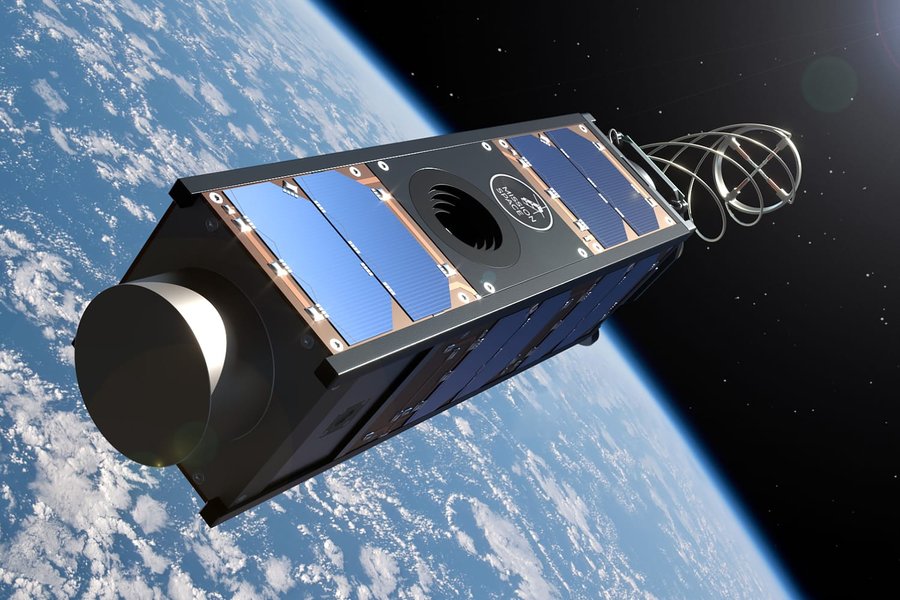
In this interview, we delve into the world of advanced optical solutions with Vasilisa Svirydava, a marketer at Scanway. Known for its pioneering contributions to the space industry, Scanway specializes in telescopes, cameras, and machine vision systems, delivering mission-critical imaging capabilities for a variety of applications, from Earth observation to space situational awareness. Vasilisa sheds light on how Scanway’s tailored solutions leverage cutting-edge technology to address the unique challenges of space environments, highlighting the company’s commitment to quality, reliability, and innovative design in the competitive landscape of space optics.
Scanway boasts a wide range of optical solutions. Can you elaborate on the specific types of telescopes, cameras, and machine vision systems your company offers?
We offer in general two types of optical payloads for space industry: one is an imagers for remote sensing applications and the other is a camera systems for a wide range of space applications.
We provide telescopes mainly fitted with microsatellites and nanosatellites platforms, able to perform the high-resolution imagery in different spectra and multispectral. We focus mainly on Earth Observation, but are developing solutions for other types of remote sensing (to support deep space exploration and scientific missions).
In case of camera systems / machine vision systems, we offer different types of systems for different space tasks, starting with simple systems (singlecam) for just data acquisition, ending with more advanced systems (smartcam) consisting of few singlecam modules, DPU, etc. able to take care of the entire imaging data chain (from acquisition to advanced processing). Our camera systems can be used in a such applications as: docking missions, space situational awareness, spacecraft diagnostics etc.



What sets Scanway apart from other companies in the space optics and payload market?
In the space optics market, there are relatively few companies that develop imagers with proven flight heritage. One of the key factors that differentiates Scanway from its limited competitors is the Technology Readiness Level (TRL) 9 achieved by our solutions. Additionally, Scanway stands out by offering payload services beyond mere sales. We provide end-to-end, mission-tailored payload solutions, including development, rigorous testing, and, when necessary, integration with the platform. Furthermore, we offer support throughout the payload’s operational phase in orbit, ensuring comprehensive service delivery.
How does Scanway ensure the high performance and reliability of its optical systems for demanding space applications?
First and foremost, our engineering team brings a high level of expertise across various disciplines, including optical, systems, AIT, software, and electronics engineering. In addition apart from developing high-quality payloads for customer missions, our team is consistently engaged in R&D projects, such as those for Polish or European space agencies. This ongoing research effort plays a crucial role in continuously enhancing our competence in payload design.
Can you describe the design and development process for a typical Scanway space camera or payload?
Every development process at Scanway starts with a precise analysis of the client’s mission goals and requirements. After, we design the solution fitted for the following requirements based on solutions from our portfolio. For the payload design, we use some tools, such as Zemax OpticStudio along with the STAR module, SolidWorks with ANSYS, Altium and others. Every tool that we use is specifically tailored to the task at hand. In multidisciplinary tasks we rely on interfaces between individual tools for speeding up the development process. A prime example of this is the export of optical component’s deformation meshes to Zemax for in depth analysis of thermal and structural deformations on optical performance. Later, we assemble the custom manufactured parts, creating engineering and flight models, calibrating and collimate them, and performing all required tests, such as environmental, TVAC, etc. Apart from standard test in space environment like TVAC and vibration test great care is put to optical tests and verification. Overall test campaigns are planned to use a baseline worked out in our company, but with tight cooperation with end customers. At next stage, we deliver the payload to the system integrators/platform providers and often assist with the integration process. Success of the solution in our case is simple: does the system fit the requirements and provide the relevant quality data (e.g., for imagers for EO, it’s the GSD, MTF, etc.). Within our development process we try to marry two distinct characteristics of development processes – having well defined target parameters that the product has adhere to with agile and iterative development approach. The iterative process together with established verification and validation steps along the way allows us to discover potential technical and operational problems at an early stage and mitigate them without impacting the performance and schedule of the overall project.


Your products range from Earth observation to in-flight inspections. How does Scanway tailor its optical solutions for diverse applications?
First, we have developed core technologies for each of our products—imagers for remote sensing and camera systems. These solutions are tailored to address different types of challenges, with each product targeting distinct mission needs. Typically, when a client approaches us, they have a clear understanding of whether they require an imager or a camera system. From there, we develop a solution based on the core technology of the chosen product, customizing certain features to ensure the imaging parameters align with the client’s specific mission requirements.
How do Scanway’s machine vision systems contribute to efficiency and quality control in the manufacturing industry?
Our camera systems, leveraging vision algorithms often powered by machine learning, are capable of operating in environments where manual quality control is not feasible, such as hazardous conditions or high-speed production processes. These systems can visually inspect the quality of raw materials, products, and processes at a rate that aligns seamlessly with the production speed, enhancing overall efficiency. With highly accurate object recognition and classification, our systems can detect flaws with high accuracy. Additionally, they can capture images across different spectral bands, enabling the detection of errors that are invisible to the human eye in the visible (VIS) spectrum.


Can you provide examples of successful projects where Scanway’s optical solutions have been used in space missions or industrial settings?
Sure, for example, our freshest mission: the “witness” for the first Ariane 6 launch. We’ve developed the dual-camera system for the inaugural flight of Europe’s largest rocket, Ariane-6. The primary challenge was to design a camera system capable of capturing two distinct processes in different directions: the separation of the main fairing and the deployment of satellites. This camera system had to meet strict ESA requirements and be fully integrable with the YPSAT system, ensuring precise monitoring and documentation of these critical events during the launch.


What are the challenges of designing and building optical systems for the harsh space environment? How does Scanway address these challenges?
One of the primary challenges in space operations is managing extreme environmental conditions, such as temperature fluctuations resulting from the satellite’s position relative to the sun. As most materials are susceptible to thermal expansion, these fluctuations can lead to structural distortions in telescopes, ultimately compromising imaging accuracy. To address this, our engineers are focused on developing an athermal mechanical structure—one that can withstand temperature shocks. By utilizing advanced materials and carefully designing the telescope’s construction, we aim to minimize thermal expansion to ensure that the positions of lenses and mirrors remain stable.
What are Scanway’s visions for the future of its products and services? How does the company plan to contribute to advancements in space exploration and industrial automation?
In analyzing trends within the Earth observation market, there is a clear, growing demand for comprehensive, high-resolution Earth observation, necessitating constellations of larger telescopes. To meet market and customer needs, we are focused on advancing our instruments to deliver larger, higher-resolution telescopes suitable for such constellations. Additionally, we remain committed to supporting scientific research, space exploration, and space situational awareness initiatives.

Alex Cresniov, Founder of SpaceTech in Gulf
About the author: Passionate in the Space industry with significant expertise in Policy Making, Global Socio-Economic Assessments, and DeepTech Analytics.
Email: alexei@spacetech-gulf.com









